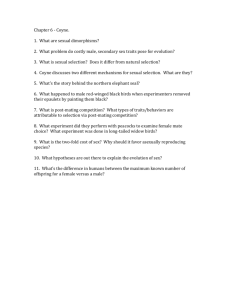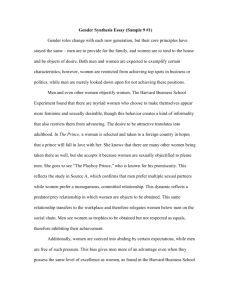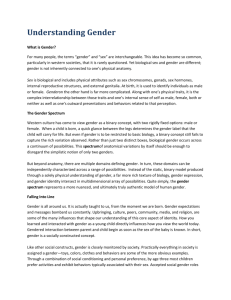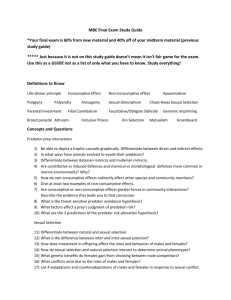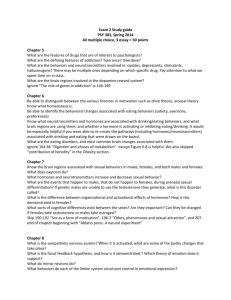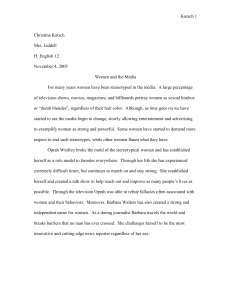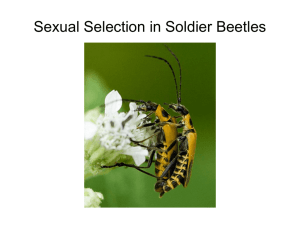course outline MBE 2015 chapt 6 and 7
advertisement
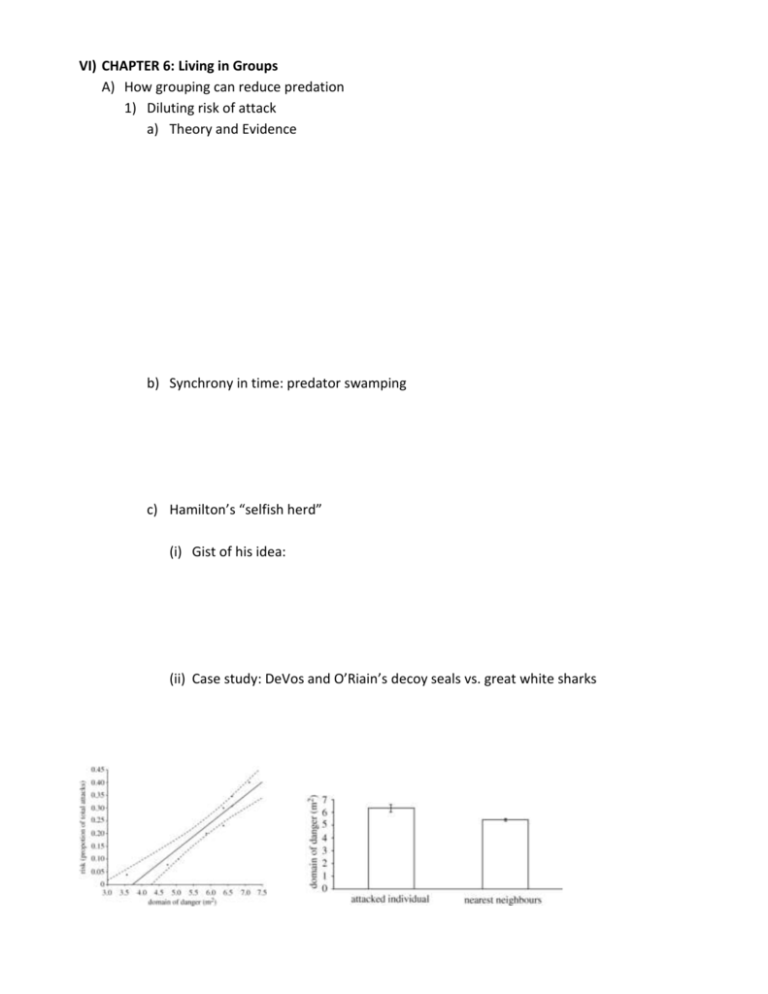
VI) CHAPTER 6: Living in Groups A) How grouping can reduce predation 1) Diluting risk of attack a) Theory and Evidence b) Synchrony in time: predator swamping c) Hamilton’s “selfish herd” (i) Gist of his idea: (ii) Case study: DeVos and O’Riain’s decoy seals vs. great white sharks 2) Predator Confusion 3) Other Anti-Predator Group Advantages B) How grouping can improve foraging 1) Better food finding a) Drylander examples: b) Fish examples: 2) Better prey capture a) Drylander examples: b) Marine examples/opportunities: C) Group Size and Skew 1) Individual differences in a group: skew theory O.Y.O.: coral reef fish case study, p. 168: D) Group Decision Making 1) Local rules and self-organized groups a) Local rules in fish shoals: Couzin; Hoare et al. 2) Leadership and voting a) Leaders and Followers b) Voting VII) CHAPTER 7: Sexual Selection, Sperm Competition and Sexual Conflict A) Males and Females 1) Differences in gamete size 2) Differences in parental care B) Parental investment and sexual competition C) Why do females invest more in offspring care than do females? D) Evidence for sexual selection 1) Traits that Improve a Male’s Success in Combat a) Classic Case study: elephant seals b) Newer example: bumphead parrotfish (Munoz et al., PLoSOne) 2) Female choice Hypothesis: a) Classic case study: Andersson’s widowbirds b) Well-studied Freshwater Fish taxa: c) Marine fish: fewer well-studied model systems d) Other marine critters with strong sexual dimorphism E) Why are females choosy? Two basic hypotheses: 1) Good resources 2) Good genes F) Genetic benefits from female choice: two hypotheses 1) Fisher’s “Sexy Son” Hypothesis (a.k.a. “Fisher’s Runaway Model”) 2) Good genes for sons and daughters (a.k.a. the “Healthy Kid” Model) G) Testing the Hypotheses for Genetic Benefits: 1) Testing Fisher’s “Runaway” Model: the trait evolves just because females like it. 2) Testing the “Healthy Kid” Model: Awesome Dads make for healthy children. a) Petrie’s peacocks b) Milinski & Bakker’s sticklebacks H) Sexual selection in females and male choice 1) Female ornaments 2) Sex role reversal I) Sperm competition 1) Two Dramas Unfolding Inside the Female a) Sperm races b) Cryptic female choice 2) Why Do Females Mate with Multiple Males? J) Sexual Conflict 1) Sexual conflict over mating a) Kwan et al’s guppy penis surgery Mean transformed and standardized number of sperm per millilitre transferred by clawed (filled bars) and declawed (open bars) males to receptive and unreceptive females. Post hoc Tukey tests revealed that clawed males transferred significantly more sperm than declawed males when females were unreceptive. Error bars are ±s.e. 2) Sexual conflict after mating K) Sexual Conflict: Who Wins? L) Chase-Away Sexual Selection 1) The gist 2) Case study: swordtail fish a) The model: swo Pl b) The Sensory Exploitation Model Pri

